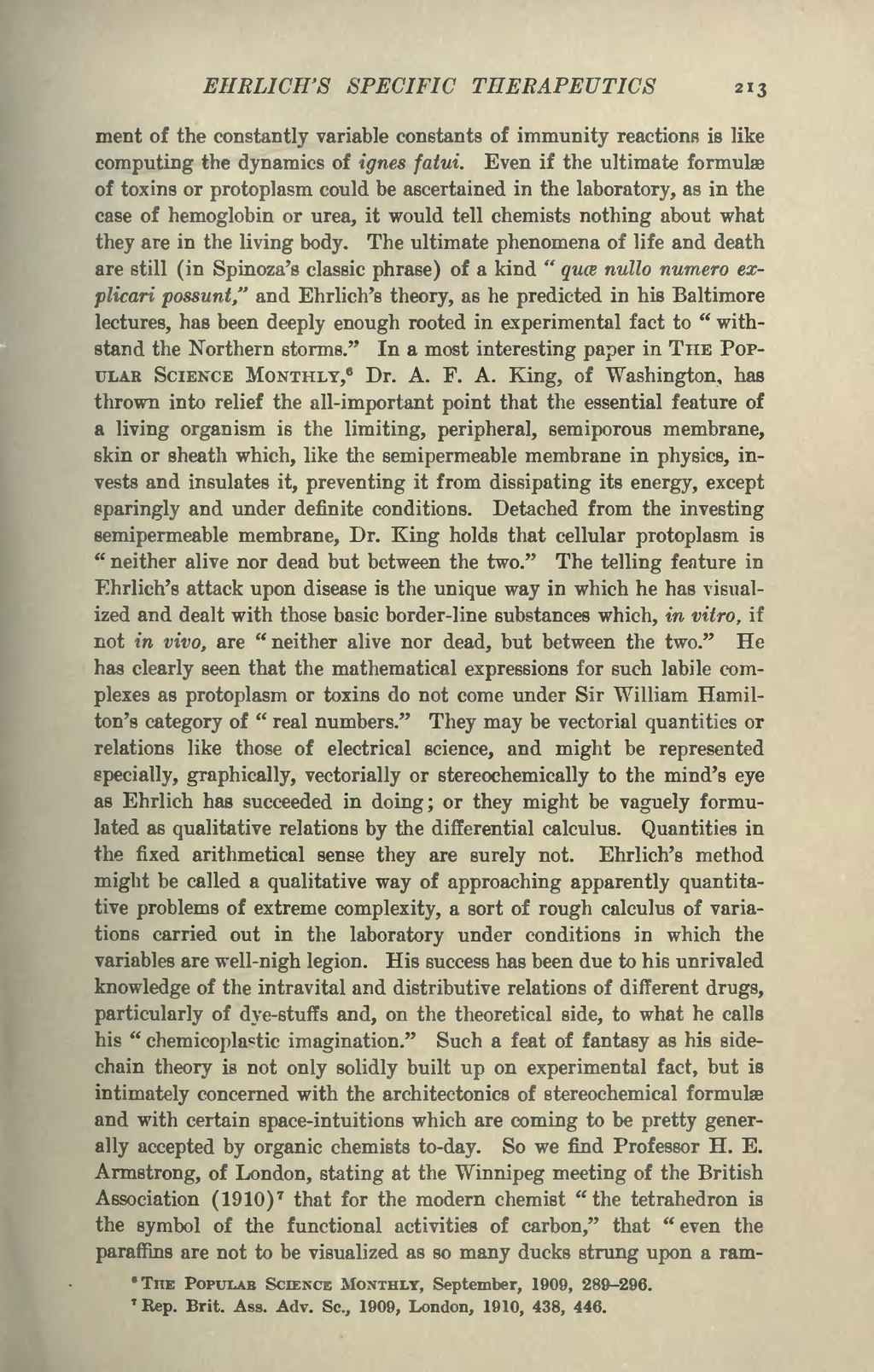ment of the constantly variable constants of immunity reactions is like computing the dynamics of ignes fatui. Even if the ultimate formulæ of toxins or protoplasm could be ascertained in the laboratory, as in the case of hemoglobin or urea, it would tell chemists nothing about what they are in the living body. The ultimate phenomena of life and death are still (in Spinoza's classic phrase) of a kind "quœ nullo numero explicari possunt," and Ehrlich's theory, as he predicted in his Baltimore lectures, has been deeply enough rooted in experimental fact to "withstand the Northern storms." In a most interesting paper in The Popular Science Monthly,[1] Dr. A. F. A. King, of Washington, has thrown into relief the all-important point that the essential feature of a living organism is the limiting, peripheral, semiporous membrane, skin or sheath which, like the semipermeable membrane in physics, invests and insulates it, preventing it from dissipating its energy, except sparingly and under definite conditions. Detached from the investing semipermeable membrane. Dr. King holds that cellular protoplasm is "neither alive nor dead but between the two." The telling feature in Ehrlich's attack upon disease is the unique way in which he has visualized and dealt with those basic border-line substances which, in vitro, if not in vivo, are "neither alive nor dead, but between the two." He has clearly seen that the mathematical expressions for such labile complexes as protoplasm or toxins do not come under Sir William Hamilton's category of "real numbers." They may be vectorial quantities or relations like those of electrical science, and might be represented specially, graphically, vectorially or stereochemically to the mind's eye as Ehrlich has succeeded in doing; or they might be vaguely formulated as qualitative relations by the differential calculus. Quantities in the fixed arithmetical sense they are surely not. Ehrlich's method might be called a qualitative way of approaching apparently quantitative problems of extreme complexity, a sort of rough calculus of variations carried out in the laboratory under conditions in which the variables are well-nigh legion. His success has been due to his unrivaled knowledge of the intravital and distributive relations of different drugs, particularly of dye-stuffs and, on the theoretical side, to what he calls his "chemicoplastic imagination." Such a feat of fantasy as his sidechain theory is not only solidly built up on experimental fact, but is intimately concerned with the architectonics of stereochemical formulae and with certain space-intuitions which are coming to be pretty generally accepted by organic chemists to-day. So we find Professor H. E. Armstrong, of London, stating at the Winnipeg meeting of the British Association (1910)[2] that for the modern chemist "the tetrahedron is the symbol of the functional activities of carbon," that "even the paraffins are not to be visualized as so many ducks strung upon a ram-
Page:Popular Science Monthly Volume 78.djvu/213
Appearance

